Byzantine chains were historically created to serve multiple interconnected purposes that reflected the empire’s power and sophistication. You’ll find they functioned as symbols of imperial authority and social rank, crafted from gold and precious stones to display status. They carried deep religious significance within Orthodox Christianity, often featuring crosses and sacred motifs. These luxurious accessories also served as diplomatic gifts to cement political alliances between rulers. Additionally, they showcased master craftsmanship while demonstrating the empire’s vast economic prosperity from strategic trade routes connecting Europe, Asia, and Africa. Each chain tells a fascinating story of medieval power, faith, and artistry that reveals the complex layers of Byzantine civilization.
Symbols of Imperial Power and Social Status
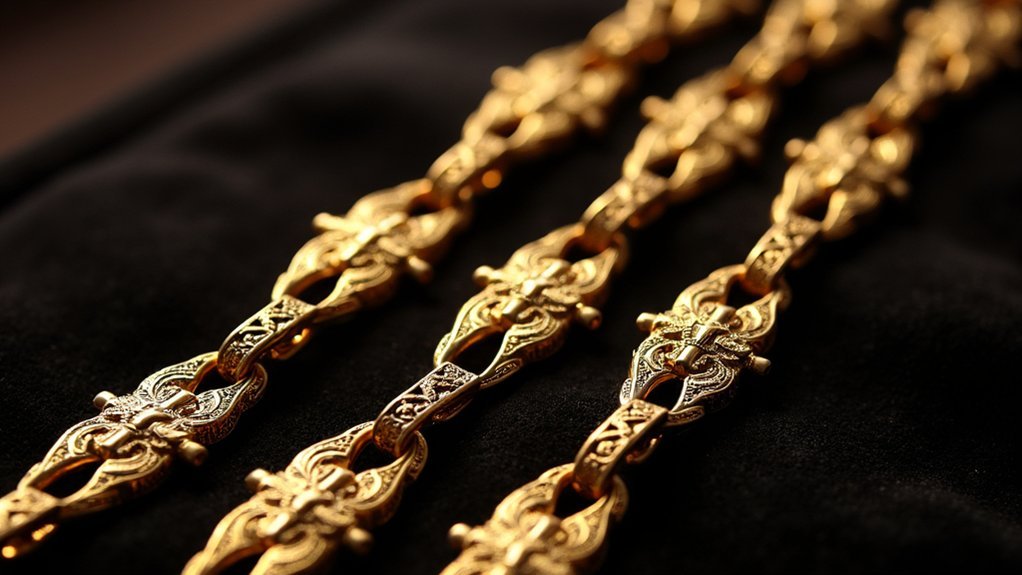
In Byzantine society, chains weren’t just decorative accessories—they functioned as powerful declarations of imperial authority and social rank. You’d find these Byzantine chains crafted from precious materials like gold jewelry, pearls, and gemstones, exclusively reserved for high-ranking officials and nobility.
Their intricate designs showcased exceptional craftsmanship while communicating your social standing within the empire’s strict hierarchy. These symbols of power often featured imperial motifs, including coins bearing the emperor’s likeness, reinforcing connections between personal adornment and imperial authority.
You’d also discover that rulers exchanged these elaborate chains as diplomatic gifts, establishing political alliances and demonstrating influence across borders. The sophisticated interlocking links and detailed embellishments didn’t merely display artistic mastery—they proclaimed your wealth, status, and proximity to imperial power throughout Byzantine culture.
Religious Significance and Sacred Representation
Beyond their role as status symbols, Byzantine chains carried profound spiritual meaning that transformed them into sacred artifacts of Orthodox Christian devotion. You’ll find that religious symbols like crosses adorned these chains, making them powerful expressions of faith within the Orthodox Christian tradition.
The inclusion of coins wasn’t merely decorative—it connected wearers to the divine right of kings, symbolizing imperial authority blessed by God.
Byzantine artisans elevated their intricate craftsmanship beyond mere ornamentation. They believed their work was a divine offering, infusing each piece with spiritual iconography that enhanced the chain’s sacred representation.
Byzantine artisans transformed metalwork into sacred devotion, believing each intricately crafted chain served as a divine offering infused with spiritual meaning.
- Chains commemorated religious milestones like baptisms and weddings
- Artisans viewed their creations as worship offerings to God
- Sacred significance transformed jewelry into devotional artifacts
These pieces held profound sacred significance in Byzantine society.
Diplomatic Tools and Political Alliances
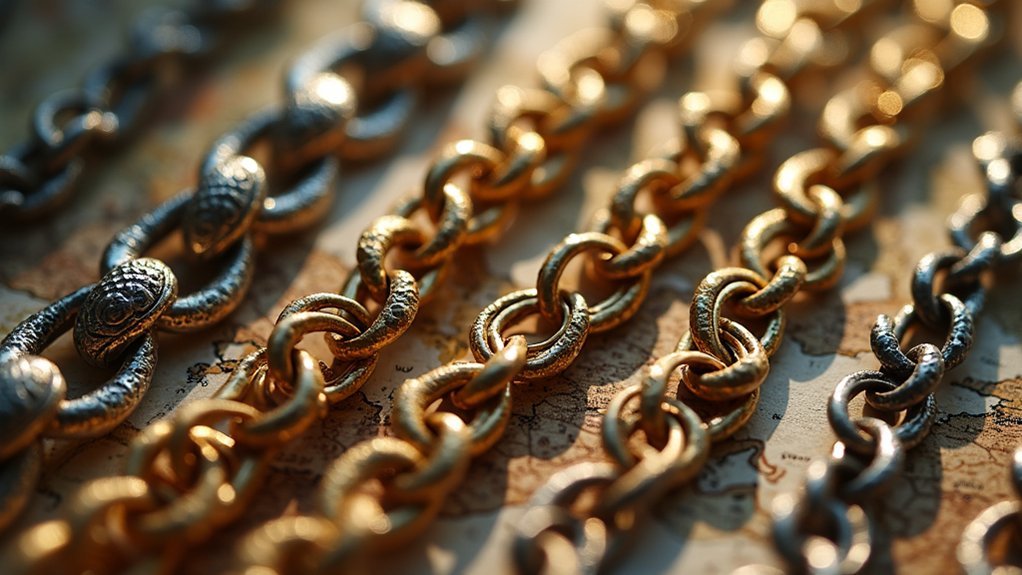
While Byzantine chains served as sacred devotional objects, they simultaneously functioned as sophisticated instruments of statecraft that cemented essential political relationships across the medieval world.
You’d find these luxurious gifts exchanged between rulers to strengthen diplomatic relationships and forge lasting political alliances. Their intricate craftsmanship and precious materials made them perfect symbols of wealth and power, suitable for high-ranking officials and royalty.
Emperor Constantine IX exemplified this practice by gifting gold jewelry to strengthen international ties.
When you examine these portable pieces of art, you’ll notice they often featured symbols of the emperor, emphasizing Byzantine authority.
These chains effectively demonstrated the empire’s cultural strength during political negotiations, making them crucial diplomatic tools that transcended mere ornamentation.
Demonstration of Master Craftsmanship and Artistic Excellence
Master artisans transformed raw gold into extraordinary Byzantine chains through techniques that represented the pinnacle of medieval goldsmithing excellence.
You’ll discover that these craftsmen possessed intricate design skills that created tightly interwoven links showcasing unparalleled artistic excellence. Each Byzantine chain served as proof of master craftsmanship, with complex patterns demonstrating the era’s sophisticated goldsmithing abilities.
- Gemstone Integration: Artisans meticulously adorned chains with precious stones, creating stunning visual displays of opulence.
- Cultural Symbolism: Religious symbols and cultural motifs were woven into designs, connecting spirituality with artistic expression.
- Status Markers: These chains functioned as demonstrations of wealth and social status among Byzantine elite.
You can see how these masterpieces combined functionality with artistry, establishing standards that continue inspiring contemporary jewelry design today.
Economic Prosperity and Trade Route Influence
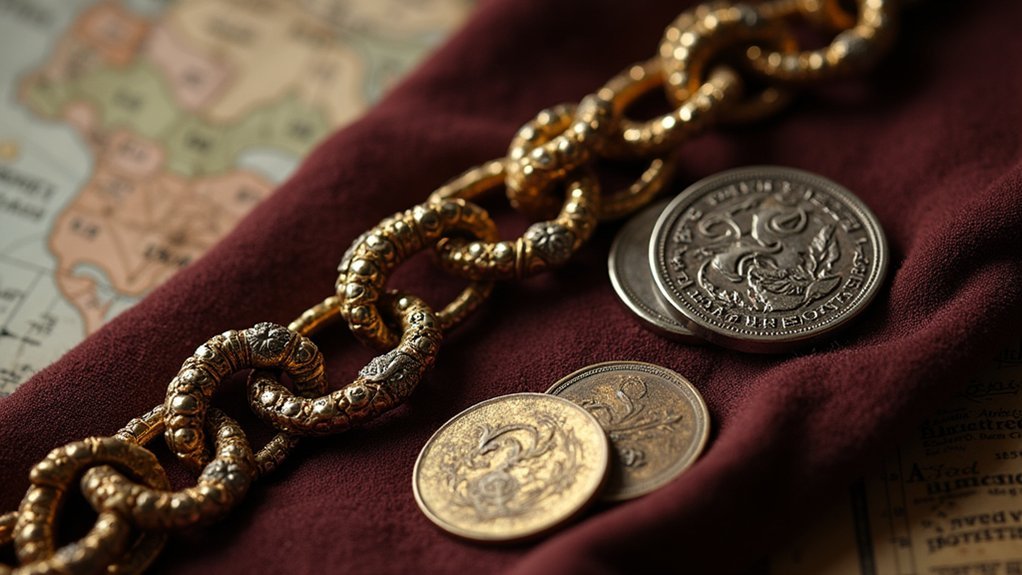
The extraordinary artistry behind these magnificent chains wouldn’t have existed without the Byzantine Empire’s remarkable economic foundation and strategic position at the crossroads of continents.
You’ll find that the empire’s wealth came from gold mines and flourishing commerce along crucial trade routes connecting Europe, Asia, and Africa. These pathways brought precious materials like pearls and gemstones from India and Persia directly to Byzantine artisans.
The empire’s economic prosperity enabled sophisticated craftsmanship techniques that created durable, visually striking jewelry.
As a successful trader or official, you’d wear these luxury chains as symbols of status and wealth. Growing demand from thriving trade made Byzantine chains prominent in markets and indispensable for diplomatic gifting, cementing their historical significance.
Frequently Asked Questions
What Is the Meaning of Byzantine Jewelry?
Byzantine jewelry represents your status, wealth, and religious beliefs through intricate designs featuring crosses, coins, and gemstones. You’d wear these pieces to communicate your social position and identity within the empire’s hierarchical society.
What Do Byzantine Bracelets Symbolize?
Byzantine bracelets you’d wear symbolized your wealth, social status, and political connections. They’d showcase your religious devotion through Orthodox Christian symbols while demonstrating your allegiance to the emperor and empire’s authority.
Is a Byzantine Chain Strong?
You’ll find Byzantine chains incredibly strong due to their intricate interlocking design. They’re crafted with dense construction and reinforced links that resist breakage better than simpler chains, ensuring they’ll withstand daily wear.
Do Men Wear Byzantine Chains?
Yes, you’ll find men wearing Byzantine chains today just as they did in ancient times. You can wear them casually or formally, and they’ll showcase your style while reflecting the timeless elegance that’s made them enduringly popular.
In Summary
You can see that Byzantine chains served multiple interconnected purposes beyond mere decoration. They reflected your empire’s political hierarchy, reinforced religious beliefs, and strengthened diplomatic relationships. You’d recognize them as masterful artistic achievements that showcased technical skill while demonstrating economic power. These chains weren’t just accessories—they were sophisticated tools that helped maintain Byzantine authority, cultural identity, and international influence across the medieval Mediterranean world.

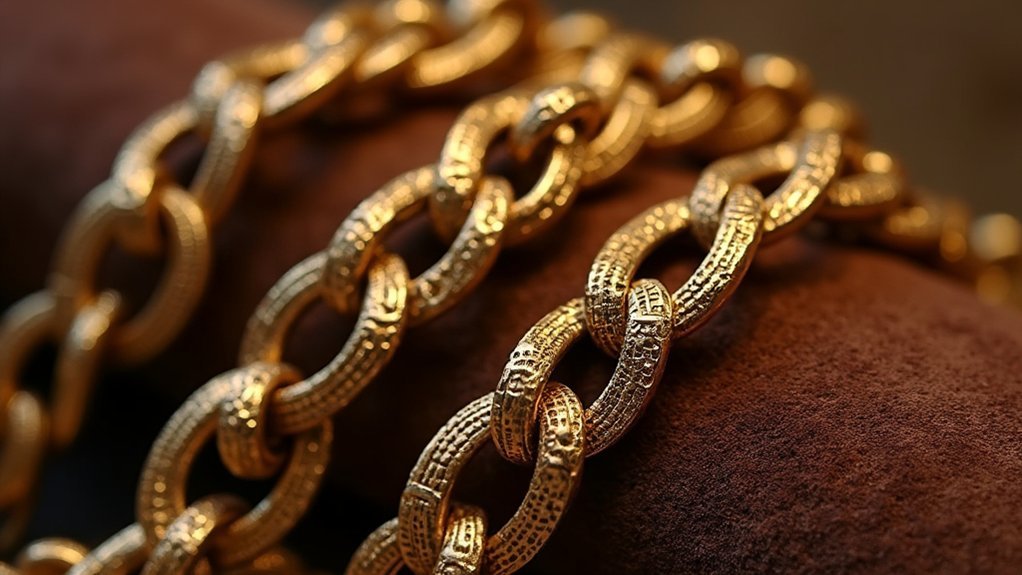

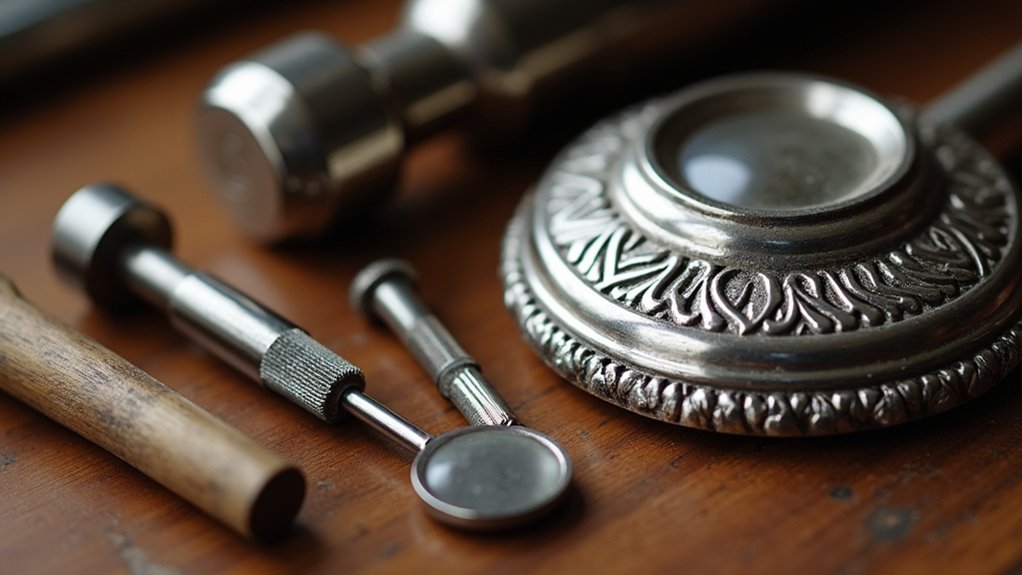

Leave a Reply